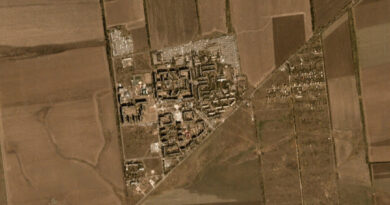Rural Australians Abandoned as Banks Close Their Doors
City dwellers often doubt cattleman Don McDonald when he mentions using a helicopter to access the internet.
As the head of the 197-year-old farming operation MDH, overseeing 150,000 cattle spread across 14 properties in Queensland’s outback, McDonald has gone to great lengths to conduct basic business operations.
He shared in a Senate inquiry that at times, they had to use a helicopter to fly over a tower to ensure adequate internet strength to pay wages due to connectivity issues. While advancements in satellite technology are improving connectivity, challenges still persist for rural areas.
The inquiry, spanning a year, aimed to investigate the closure of rural banks, with 798 branches shutting down in the six years leading up to June 2023, leaving approximately 600 towns without a bank, including regions like Coober Pedy in South Australia and Tom Price in Western Australia (WA).
Remote business owners have resorted to flying their cash takings to city branches due to bank closures in their areas, like WA tourism operator Drew Norrish, who personally transports cash to Perth.
Major banks noted that over 95% of transactions are digital, leading to reduced demand for cash and a decline in face-to-face transactions, reflecting a shift in banking habits.
The closure of banks in rural areas highlighted the stark differences between city life and rural life, with physical bank branches serving as a symbol of prosperity and a vital part of the community fabric.
Challenges arise when banks close, affecting the social structure and economic activity in regional towns, impacting residents, professionals, and vulnerable populations. The loss of a bank can have cascading effects on a community, leading to closures of essential services like schools and medical facilities.
Testimonies from individuals like Maisie Robinson from Junee underscore the significance of physical bank branches, especially for older generations and those with limited digital literacy, who prefer face-to-face banking services.
While banks emphasize the shift towards digital banking, issues of digital exclusion persist in regional and remote areas due to inadequate connectivity and lack of resources. Efforts to bridge this digital divide are essential to ensure equitable access to banking services for all Australians.
The report from the inquiry highlighted the need for regulatory oversight on bank closures and suggested exploring options for a publicly-owned bank to address the gaps in rural banking services. However, concerns were raised about the viability and potential risks associated with such a government-owned institution.
As regional communities face further closures of bank branches, residents like Greg Zakharoff from Junee advocate for preserving access to essential banking services to support the local economy and community well-being.





